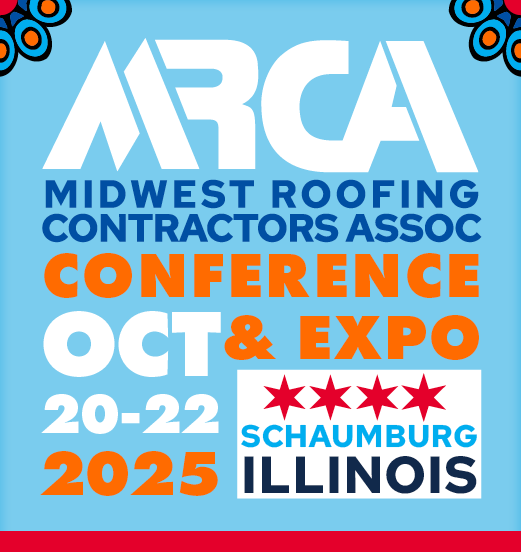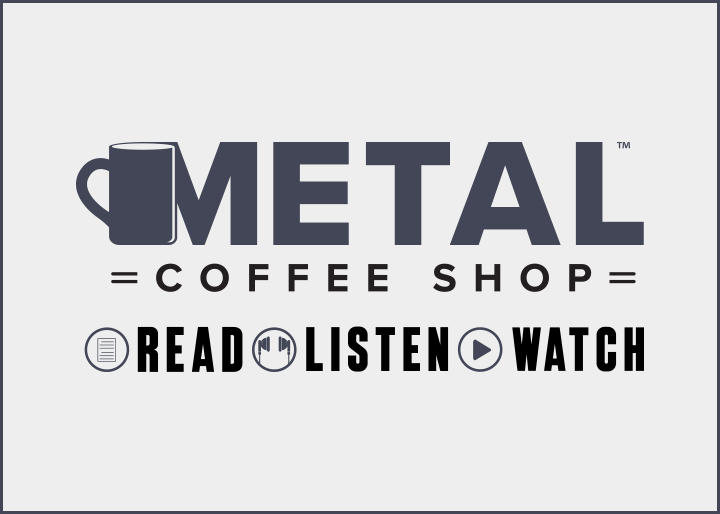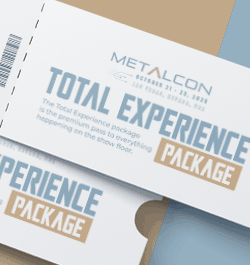Nick Nobbe - Quarrix Wall Protection, the New Frontier! - PODCAST TRANSCRIPTION

Editor's note: The following is the transcript of an live interview with Jennifer Stone and Renae Bales, the co-chairs of National Women in Roofing. You can read the interview below, or listen to the podcast.
Speaker 1:
Welcome to Roofing Road Trips with Heidi. Explore the roofing industry through the eyes of a long term professional within the trade. Listen for insights, interviews, and exciting news in the roofing industry today.
Heidi Ellsworth:
Hello and welcome to another Roofing Road Trips from Roofer's Coffee Shop. My name is Heidi Ellsworth, and we are here today to talk about more than roofing. When you're talking about roofing, people think, well, it's just the roof, but every contractor out there has had to work with the transitions between wall to roof, walls on the roof, wherever it may be, wherever you're putting that together. So we have today, Nick Nobbe from Quarrix here on the show to talk about those transitions and also a little bit about maybe how you can bring more siding into your business. Welcome Nick.
Nick Nobbe:
Thanks. Thanks for having me Heidi. I'm glad to be here today.
Heidi Ellsworth:
We are always glad to have you. We've had a couple of podcast now and it's always fun. Nick, just for those who maybe haven't listened to our last podcast, can you introduce yourself and just kind of tell us a little bit about Quarrix?
Nick Nobbe:
Yeah, so I'm the technical product manager at Quarrix Building Products. And at Quarrix we're a company who we really focused on protecting the home and buildings if I have to simplify it down. We have a series of products, on one category is adding protection, so that's more focused on ventilation. We have roof protection, which is a couple protective accessories to keep that roof protected and healthy. And then the third is wall protection. That's really what we'll be focusing on today. But I think the story of how we've evolved as a company in terms of, we used to just be a ventilation company. We've focused on ventilation and we've grown to realize that there's a lot of opportunity in wall protection and it was a much missed part of the home and structures. And I think that's one of the things we'll definitely talk about today is where roofers can start to focus on growth and opportunity as well.
Heidi Ellsworth:
Yeah, I like that. And you think about dormers, you got to have wall protection with dormers. Whatever you're doing, whether you're moving down onto the sides of the building or even dormers or other types of structures on the roof, this is a really important product for contractors to protect the home. I love that, protect the building. That's so cool. So before we get into that nitty gritty, what are you seeing Nick with contractors who are expanding their business beyond roofing onto exteriors?
Nick Nobbe:
And so a couple things one, I think a lot of contractors realize every business wants to grow, it's always about growth. And a very natural way to grow for a lot of contracting businesses, especially when you're focused on roofing, siding is a very natural next step. And I think the nice thing there and the reason why is because you're still staying on the outside of the home and it all makes sense in terms of that story. I talked about with Quarrix in our story it's about protecting the home, you are an exterior solution company. So it all ties together from a sales, and a marketing, and a presentation standpoint to have those two together. Plus again, it gives you an opportunity to grow into a different category.
Nick Nobbe:
One of the interesting things though that I've seen, and I think a lot of contractors learned this during the pandemic and especially this past probably six to nine months where we saw significant shortages of raw materials and particularly asphalt shingles. The thing is, is when you are very pigeonholed to one specific thing, if all of a sudden the supply of shingles drops, then you might not even have enough materials to complete jobs. So what I was hearing a lot over this past year is the companies that were still doing well and keeping their crews busy were the ones who had other services they offered. And siding was one because siding wasn't in quite as much of a shortage as shingles were. So it's almost kind of a way to diversify your business portfolio too. And you can have different jobs going to help you when certain raw materials might not be as readily available. So it's also a way to keep your business going, even when certain parts slow down for a variety of reasons.
Heidi Ellsworth:
Yeah, that is such a good point. And I think a lot of contractors have seen that. That you got to be able to offer what you can get around these material shortages and around labor. What can your crew do in the off season that makes sense. I think one of the other things that I've seen with contractors who have extended their business into exteriors, is they are able to build longer term relationships with homeowners and building owners. I mean, you really see that because you do the roof one year, you do the siding the next year, you do the windows the next year. All of a sudden you have a relationship with this home or building owner that when you only do one roof every 15 years, you don't have quite the same relationship.
Nick Nobbe:
Oh, for sure. Yeah. You were for sure going to make this, unless you do a very poor job on the initial installs, like whether it's the roof and the siding project, you were going to make the short list of the calls at least to come back and bid that other jobs. That's a great point that I didn't hit, but you're right. It's establishing that relationship and you're very, very likely to get a call because homeowners... Based on a lot of our research with homeowners, it really comes down to trust and name recognition and how much knowledge does my contractor have. They will have a good handle on that if they've worked with you in the past. But if they're only reading Yelp reviews or just assessing based off of your webpage, they have very little basis to make a decision of, is this a good contractor or not, but if they've worked with you, that's a pretty good indicator. So yeah, you're right. It's like you're going to be the first one getting the phone call.
Heidi Ellsworth:
Yeah. And I want to remind everyone out there too, if you haven't listened to earlier podcasts or even our RLW, Quarrix does have an amazing homeowners study that Nick ran and did, which was across. Both written and verbal and interviews and just some great information that you can find on Roofer's Coffee Shop to really understand how those homeowners are thinking. And it really is about trust and that quality. Let's talk a little bit about, even if a contractor is saying, "I'm not going to go into siding, I'm happy just doing roofing," we still know there's going to be wall protection needed on many types of roofs. So as you're looking at that, what should a roofing pro understand about wall protection so that they can install it right and also make those transitions as they need to, especially wall soffit roof, all of that.
Nick Nobbe:
Yeah. To start high level on that one is just like going back to what I was saying earlier, it comes down to knowledge and trust. So if you can talk the talk a little bit, even if you're not doing a full blown siding job for homeowners, you better be ready because they might have. If you have roof to wall transitions on your house, they might ask you about that. And if you don't have answers on what to do there, and you're just going to wing it when you get up there or hope your crew has some ideas for what they're going to do, it doesn't lend itself well helping you win the job. So, I mean at a high level, it is just like you want to be educated on the full system and you want to understand, so at least you can address any questions that might come up, but to get more specific, like there are certain details that are important to know.
Nick Nobbe:
And even some things that in some cases might be going against or violating codes, if they do certain things like for example, let's say that siding system, if they put in a rain screen and they have an air cavity behind there for ventilation drain, which is great. If they vent that up into the attic though, that actually goes against codes, you're not supposed to be venting those. So if you come to find that, if you don't know, if you're not educated on the wall protection systems and rain screen systems and the codes there, you might actually not know that, that's a problem that you need to correct because that will potentially impact the ventilation in the attic space. So there are a lot of places and details where they can actually, it might seem surprising but it can affect the roof and the ventilation system too, based on those details.
Nick Nobbe:
So, and also on the roof, those roof to wall transitions, those are some of the most common areas where you see issues, whether it's like moisture buildup or leaks. So I think it's always really good to have that knowledge base. Now again, you don't necessarily need to be an expert and you don't need to be like... You're going to be targeting those projects all the time, but you do need to have some of that base knowledge to understand how do the roofs and exterior walls interplay with each other.
Heidi Ellsworth:
Yeah, I think so. And taking the time to educate, you and I have talked about this a lot, educate obviously your crews. I mean that's a given, but also educating your internal staff, the people who are answering the phone, who are answering questions for homeowners. I mean really having them understand wall protection too is important.
Nick Nobbe:
Yeah, no for sure. And it just lends to that credibility. And everybody always asks me or I get forwarded so many technical questions a lot when we get phone calls or emails and you'd be amazed at how simple, I would say 85 to 90% of the questions are, and they're usually coming from homeowners sometimes from architects or builders. But a lot of times they are very simple things. And if you train your team on a couple talking points, not only are you able to address your customer's questions and concerns then, but also it just makes you and your company appear that much more educated and knowledgeable in the eyes of your customers. And again, it's not like you're having to make your team experts on very technical details. It's just a couple high level talking points and to be able to communicate features and benefits, things like that. It doesn't take a lot of time, but it goes a long way.
Heidi Ellsworth:
Yeah. So true. So true. So, okay. We've been talking about this wall protection, but why don't you give us the overview on the Quarrix wall protection product line and tell us about your product and why it is making such a difference for contractors?
Nick Nobbe:
Yeah. So we have a series of furring strips and a rollable drain mat. It's one of those textured entangled net mats, and what all of those products do is they create a rain screen gap between your exterior siding and the wall. And they go in between the house wrap and the siding material, and it creates a gap. And there's a variety of different products that create different size gaps, but that gap is for that whole system is called a rain screen. And the idea there is you're doing two things. One, is you're providing a drainage plane. So any moisture that gets driven in behind your side material, because moisture just always finds a way in, it just naturally does. It's one of the unfortunate things, but it's what we got to protect against.
Nick Nobbe:
So allow that moisture when it does get in to drain down and out of your wall system. And second, what it does is it provides a little bit of a channel for air to flow to dry it out after that raw moisture has trapped in there. And that helps to keep all those materials healthy. And it helps them reach the end of their usable lives versus degrading earlier. And what we found is you can see this is starting to become a lot more of a trend. It used to just be out in coastal regions where they saw a lot of moisture, but now we're starting to see these rain screen systems being installed everywhere across the country. And you can see it just because we have firsthand experiences of it too. A lot of the siding manufacturers are requiring it now in many instances to help prevent any premature deterioration of their side and because what was happening is when the siding boards are sandwiched up against the wall.
Nick Nobbe:
And there's no way for that trap moisture to get out, it was degrading their materials and they were shortening the life of it. So from a warranty standpoint, it's becoming in some cases required, and now it's not fully across the board yet, but it definitely the industry seem to be trending that way. And it's a good thing because it helps keep your exterior of your house healthy. The last smaller benefit too of it is because you have that air gap that actually acts as like a radiant barrier in the sense of when that sun doesn't direct all the UV Ray that heats up your inner siding, doesn't directly transfer then into the house. So it actually helps with heating and cooling as well.
Heidi Ellsworth:
Wow. That's great. And well, I live in the Pacific Northwest and there have been a lot of siding failures because of that, because we have so much moisture. So yeah, it's not just a coastal thing, it's everywhere. And now with the weather changing as it has, and with all of the... I mean, look at the storms that we've had in December now, which is just crazy, homeowners are definitely going to be looking for these solutions to make sure that everything lasts as it should. And I love energy savings too. That's pretty awesome.
Nick Nobbe:
Yeah. A lot of benefits and it's not a cumbersome installation. It's just a little bit more time on the installers part, but it adds a lot of benefit in the long run, especially for that home.
Heidi Ellsworth:
Well, and talk a little bit about the technology behind your rain screen and the firring strips. How's that working and why is it so effective?
Nick Nobbe:
Yeah. So what we have is, I think it starts with the materials. If these are materials that are going to be keeping that siding healthy for the 20, 30, 40 years that they're supposed to last, you want to have something that can hold up to that one too. So we use very durable weather, tested materials and it's durable engineered plastics. And so with our firring strip line, they're very strategically designed and built to provide, not only creating that gap and supporting that whole system and creating that air cavity. But it also, they're designed with air channels to be able to allow that cross ventilation, because the thing is, think about it. If you just stuck a wood firring strip up vertically, every 16 inches on center on a wall, that's not going to allow air to travel horizontally.
Nick Nobbe:
So we've designed them to allow for that. Plus the thing is, if you're putting up wood firring strips, even if you do get that nice longevity in your siding, if the moisture does get to those wood firring strips, they are going to rot out [inaudible 00:16:17]. So you want highly engineered materials that are built to last. I also think about a lot of times we're seeing a lot more vertical siding installations now as well. It's just a stylistic trend, especially like wood based products. If you all of a sudden are installing firring strips horizontally, think about moisture draining down. It's going to pull on the top side of those with firring strips and then you're going to have lots of trapped moisture. So we've seen a lot of instances of that where it's a matter of you got to have the right products.
Nick Nobbe:
And that's where again, our drain mat it's about 90... I would say 92% open material. So it allows all that to track down and save our firring strips because of our drain and ventilation channels. They're designed to be able to handle that. So it really comes down to having really good materials, having materials that have that drainage capacity. And then in some instances you want to get more specific. So let's say for example based on your siding application, if you're doing maybe with stone or brick, a lot of that mortar can tend to fall in behind the wall and clog up certain products. So if you're using a drain mat for example, you want to make sure it has a protective like a membrane or a fabric on it. So it keeps the drainage portion of it protected. And so our drain mat has that and it stops, I think more from falling in.
Nick Nobbe:
And then let's say for example, if you're doing an open cladding system, decking on the walls, which is becoming a lot more of a trend, you want to make sure that you're putting firring strips behind that, that are UV stable because there's a little 1/8th, that [inaudible 00:18:02] gaps usually between the boards. So make sure you're picking the right product for your application. And luckily we've done some research on what applications are required and what are they looking for? And we've tailored products to do that.
Nick Nobbe:
But I just encourage contractors to do some research on it, figure out one, do I need a rain screen in my jurisdiction because in some cases you might be required to do it. Two, does your siding manufacturer, whatever siding material using do they have it as a requirement as part of their warranty because a lot more of them are doing it now than they used to. And then three is specific to your application. Is there a right product for you in your case. And make sure you're asking all those questions because then you can be putting the best system on to help with the longevity of that wall.
Heidi Ellsworth:
Yeah. And you help with that sort training for contractors, right?
Nick Nobbe:
Yes. We do.
Heidi Ellsworth:
So talk a little bit about that training offering you have for the crews, but also for the sales teams.
Nick Nobbe:
Yes. So we do a lot of trainings with contractors, with installers. We usually get a mix of we'll have the installer teams on, but then we also do a lot with the sales teams and the admin teams as well. So it's a pretty, I would say all encompassing training where we start with the really high level of what is wall protection and what are rain screen systems. And we fill you in on the codes, but then go then all the way down to the ground level, technical installation questions and details, address project specifics. If somebody wants to do a training on a specific project and talk about technical details on that, we'll go all the way down to that level.
Nick Nobbe:
But it's all rolled into a simple, easy to digest presentation. So we collect it... And we like to tailor it too. So based on the style of projects that a contractor or a group of contractors might have. So we've been doing this for, I would say probably about a year now, because we've fully ruled out our wall protection line, but this goes back because we have had some of these products for many years and we just didn't really have the resources and I would say the time put behind them to really build this up. Because frankly, we didn't even see the need in the market for a long time. And then all of a sudden we start realizing, "Wow, a lot of people are doing these rain screen systems." So we do have the resources now to support for when contractors are looking to educate their teams.
Heidi Ellsworth:
See that's great. And really what you can do too, is taking that combination of the rain screens and the ventilation and everything you do that protects the building and having that bigger discussion too, because we know one thing doesn't just live by itself on a building, it influences everything else within that structure. So are you able to have through your trainings and everything mix that up a little bit?
Nick Nobbe:
Oh, for sure. Yeah. No, those are my favorites, is when we can do and we can position. It's like, "Hey, this is the whole home, everything's a system always." I always say that's the thing. I think one of the misnomers in building and construction is that the roof is the roof and the walls are the walls and they're all very isolated and independent from each other. But everything ties in together and even just comes down to, what is your HVAC system in your house, and do you have an in-home humidifier dehumidifier system? Because that is going to tie into how much moisture is in the house, which then ties into home much is in the attic.
Nick Nobbe:
And just thinking like that's one example, but there's so many instances where things that you might not think would impact other areas very much do. So I love educating our customers and anybody who's really willing to listen to say, "Hey, here's the whole big picture. Let's talk about it. And what are the challenges that you guys see on the field. And then let's come up with some solutions for that." So yeah, we can definitely package all of that up together. So it doesn't have to be just walls or just the attic or just something else.
Heidi Ellsworth:
I love it. And that just makes the contracting business even so much more powerful because you can talk to the homeowners across the board and help them. And I think that, even if you're not doing siding, if you are doing that wall to roof transition and you see something's wrong, you now can talk to that homeowner and be their hero and help them work through it. So just such a great sales and marketing strategy, but also just an overall business strategy for roofing contractors to either incorporate or at least be aware through the training of how to help their customers. So how do they get a hold of you. How they get a hold of you, how do they do this?
Nick Nobbe:
Yeah. I'm not too hard to find. If you go to quarrix.com, you can send us emails through that. You can call our 1800 number on the sign and you'll be able to get routed directly to me pretty easily. And I'm always fielding technical questions and always happy to do that or talk about of presentations or another way is, if obviously you're a Roofers Coffee Shop member, my contact information is on the website. I've done a lot of work with you guys over the last two years. So there's a lot of content there, but also my contact information is there as well. So I would say that's probably your best starting point. And then from there, just check out the Quarrix website @quarrix.com and you'll easily be able to get in touch with us and we'll be able to support whether it's training, whether it's product needs. We are very collaborative with our customers and love to engage with whatever their needs are. Even if there's not a need you need for a project, always still happy to have those conversations.
Heidi Ellsworth:
Yeah. And for everyone out there, you can find so much from Quarrix on Roofers Coffee Shop just like Nick is saying. We've done webinars, we've had podcasts. We have all the information in the directory, which is very easy to find. And you can see them as we go into this new year at the trade shows, we'll be talking about that, getting you out there where you can actually see, get hands on. But I think that's really the key so often and distribution plays an amazing role, but to get that specific information, to get with a manufacturer like Quarrix, who really understands the overall building envelope that can make such a difference for your business. And Nick is awesome to work with. I'm just saying right now it's so much fun. That is cool. Anything else, any new things coming up for the year, Nick?
Nick Nobbe:
Yes. I'm glad you mentioned the trade. So we will be at IRE in new Orleans and I believe end of January, early February. So we will be there, we'll have a booth. So definitely stop by. We're pretty active on social media. And so we're always posting what's the latest and greatest, but we have a couple products that [inaudible 00:25:26] coming out in 2022 that I'm pretty excited for that I'm actively working on. But again, I think a big focus of mine in this coming year. It has been the last couple months, but especially thus upcoming year is going to be focusing on wall protection because rain screens are just becoming more and more common, more homeowners are asking for them. So I would just encourage contractors to at least to start some preliminary, do some research, do some reading on it, ask some questions on it.
Nick Nobbe:
If you have manufacturers, wraps or even in your distribution contacts, on the siding side of things, I would say ask some questions and take a look at that for your business because I know from our perspective at Quarrix is, again, I alluded to it. We've had just one single skew, a firring strip in our, we've had in our basket products for decades actually, but we never really put in the time and the effort and the resources behind it. And we just kept getting more and more questions. Architects were specifying it more and more. And we started to realize our industry is not quick to change. But it is starting to move and we can see this is becoming more and more common practice.
Nick Nobbe:
And I personally believe it's definitely not going away. This is not just a fad. And I do think it's going to start to find its way into a lot of codes in a lot of parts of the country, if not fully across the country. So I would definitely advise people to just start doing some research and asking some questions about this. And we would love to be your starting point for that to just help educate you. But if nothing else, I think listening to this podcast here is a great start. And we'll be happy to support along the way.
Heidi Ellsworth:
Well, I would encourage everybody out there. This is one of those nuggets. This is one of those things where you can really do something in your business that's different from everybody else and be on a leading edge. And with the way the weather is going with the way we're seeing the storms, this is the perfect time to be talking about this to your homeowners and incorporating it in your business. So Nick, thank you. I'm so excited to see you at IRE and check out all the products, we will be there also. And so this is another great opportunity to connect with all of you listening today and with Nick. So Nick, thank you so much for being on this podcast today.
Nick Nobbe:
Awesome. Thanks Heidi. I appreciate it.
Heidi Ellsworth:
Thank you. And thank you all for listening. All of these kind of information we're bringing to you every day through podcasts to really help grow your business. And you can find all of our podcasts under the read list and watch initiative under podcasts on rooferscoffeeshop.com or on your favorite podcast channel. So be sure to subscribe and get notifications so you don't miss a single one and we'll be so you next time on the Roofing Road Trips. Thanks.
Speaker 1:
Make sure to subscribe to our channel and leave a review. Thanks for listening. This has been Roofing Road Trips with Heidi from the rooferscoffeeshop.com.























Comments
Leave a Reply
Have an account? Login to leave a comment!
Sign In